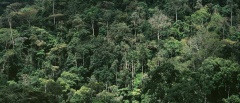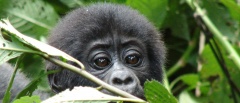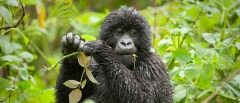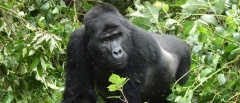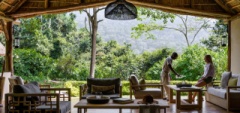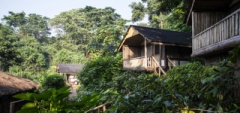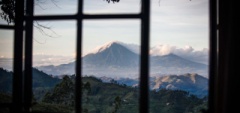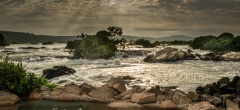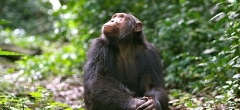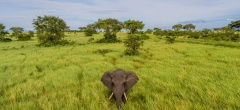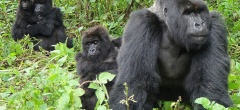Bwindi Impenetrable National Park
A majestic forest home to half of the world’s population of mountain gorillas.
In the southwestern corner of Uganda sits the most biologically diverse forests in Africa - Bwindi Impenetrable National Park. The forest is part of the Rift Valley Mountains that stretch over three countries – Uganda, Rwanda and the Democratic Republic of Congo – and the most famous reason to visit this group of forests is to see the mountain gorillas.
On a global scale, the number of mountain gorillas left in the wild is shockingly low, but Bwindi National Park protects an estimated 400 mountain gorillas – which is roughly half of the world’s population! Visiting Bwindi gives you the opportunity to trek through the forest to see one of the several habituated gorilla groups and this experience is a once-in-a-lifetime experience.
The park itself is one of the oldest in Uganda (dating back 25,000 years) and its diverse landscape homes approximately 120 mammals (including two species of elephant), several primate species (including mountain gorillas, baboons and chimpanzees), and around 350 species of birds. Depending on how long you stay, a visit to the park can combine all of wildlife experiences, as well as experiencing the lush and vibrant flora and fauna of the park.
Gorilla trekking in Bwindi
The gorilla groups in Bwindi are all located in different areas of the park. Therefore, which gorilla group you see will depend on where you are staying in the park (northern or southern Bwindi) and how far you want to trek (some can be shorter hour walks, others can be full day treks through the forest).
Across all of Bwindi National Park (the northern area of Buhoma and the southern area, the habituated gorilla groups include: the Bitukura group, the Oruzogo group, the Mubare group (also known as the M group and the first to become available for tourism in Uganda in 1993), the Habinyanja group (the H group), the Rushegura group (the R group), the Kyagulliro group, the Nshongi group, the Nkuringo group, the Mishaya group, the Bweza group and the Busingye group.
The numbers in each family group vary, but range between a smaller group of 6 to a larger group of 20. Each gorilla group has interesting relationships and unique stories, which your guide will explain during your trek through the forest. Some of these stories are pretty brutal, such as large silverbacks attacking and killing younger males who may currently, or in later years, pose a threat to his status.
To see the gorillas, you will need a park permit. Uganda sells 88 gorilla permits per day for Bwindi National Park for 11 gorilla groups, which works out to be a maximum of 8 people trekking to see one gorilla family at a time, accompanied by UWA (Uganda Wildlife Authority) guides. You must be over 15 years old to do a gorilla trek.
The gorilla permits are currently selling at a cost of $600 per person (US dollars) but from the 1st July 2020, they will increase to $700 per person. This is half the price of the neighbouring country Rwanda, who charge $1,500 per person for a single gorilla permit.
Mountain Gorillas are an endangered species so, for this reason, it is crucial that the permits are in place to protect and preserve their privacy. Permits also help to save mountain gorillas from diseases that can be caused by too many visitors or crowds. The money from the gorilla permits contributes to the conservation of both wildlife as well as the local community, which helps train the local guides and rangers who protect the park.
As a gorilla trek is usually a once-in-a-lifetime experience, it is important that you are aware of the rules and equipment required to make your trek as comfortable as possible. You will need your passport (for registration before trekking), trekking boots, a warm jacket for the cool early mornings, some waterproof jacket and trousers, thin gloves, a long-sleeved t-shirt, a hat, sunglasses, strong sun protection, mosquito repellent and money for tipping (for the ranger and the porters if used).
Before you depart for the gorilla trekking, there will be a morning meeting to run through some logistics and rules for the trek. The park trackers will go early in the morning to track the gorilla families, starting where they left them the previous day and communicate their location on radio call. You are then divided into groups of 8 to start your trek. This will take an average of around 2 and 5 hours and will possibly be on steep terrain. It is therefore important to have reasonable fitness and be free from any colds or flus.

